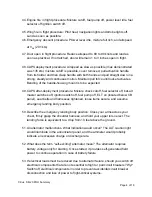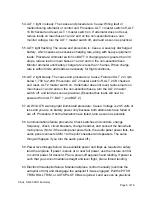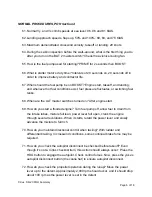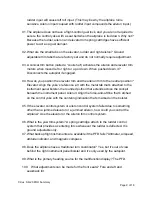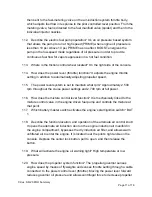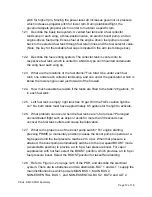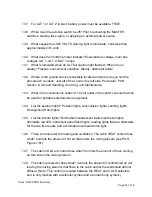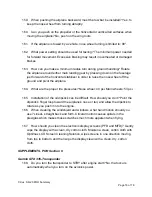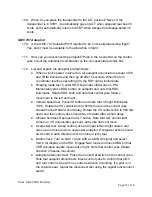
NORMAL PROCEDURES, POH Section 4
61.Normal Vy, and Vx climb speeds at sea level: 96, 96 and 81 KIAS.
62.Landing approach speeds, flaps up, 50% and 100%: 89, 84, and 78 KIAS
63.Maximum demonstrated crosswind velocity, takeoff or landing: 20 knots
64.During the cabin inspection before the walk-around, what is the first thing you do
after you turn on the BAT 2 master switch? Check the avionics cooling fan.
65.How is the fuel pump used for starting? PRIME for 2 seconds then BOOST
66.What is starter motor’s duty time? Intervals of 20 seconds on, 20 seconds off in
order to improve battery and contractor life.
67.When should the fuel pump be on BOOST? Engine start, takeoff, and landing;
and whenever hot fuel conditions exist, fuel pressure fluctuates, or switching fuel
tanks.
68.When are the ALT master switches turned on? After engine start.
69.How do you start a flooded engine? Turn fuel pump off, allow fuel to drain from
the intake tubes, mixture full lean, power lever full open, crank the engine
through several revolutions. When it starts, retard the power lever and slowly
advance the mixture to full rich.
70.How do you maintain directional control when taxiing? With rudder and
differential braking. In crosswind conditions, some continual brake force may be
required.
71.How do you check the autopilot disconnect be checked before takeoff? Even
though it’s not a Cirrus checklist item, this action should always occur: Press the
HDG button to engage the autopilot. Check control forces. Now, press the yoke’s
autopilot disconnect button (the coolie hat) to ensure autopilot disconnect.
72.How do you check the propeller operation during the runup? Move the power
lever up to the detent. Approximately 2,000 rpm should occur, and it should drop
about 100 rpm as the power lever is set in the detent.
Cirrus SR-20 POH Summary
Page 6 of 18




